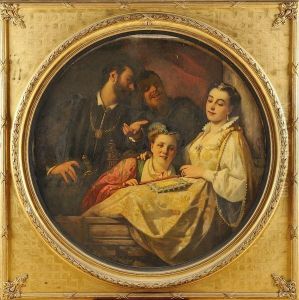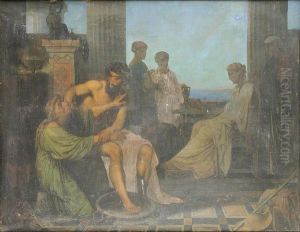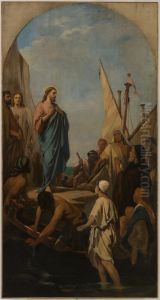Charles Camille Chazal Paintings
Charles Camille Chazal was a French painter born on May 20, 1825, in Versailles, France. He was known for his historical and genre paintings, which often depicted scenes from French history and mythology. Chazal's works were typical of the academic art style of the mid-19th century, reflecting the values of the French Academy of Fine Arts, which emphasized classical standards of beauty, harmony, and the importance of high finish in paintings.
Chazal received his artistic training at the École des Beaux-Arts in Paris, where he studied under prominent painters of the time such as Paul Delaroche, who was known for his dramatic historical scenes. Influenced by his teacher and the broader artistic movements of the time, Chazal developed a style that was both romantic and academic, often focusing on the human figure, detailed compositions, and rich color palettes.
His work was exhibited at the Paris Salon, the official art exhibition of the Académie des Beaux-Arts in Paris. Chazal gained recognition and was awarded medals for his submissions to the Salon. His paintings often resonated with the public and critics alike for their evocative portrayal of scenes from French history, such as the Renaissance period, as well as depictions of mythological subjects.
Despite his successes, Charles Camille Chazal is not as well-known today as some of his contemporaries. The latter half of the 19th century saw a shift in the art world with the rise of Impressionism, which moved away from the academic style favored by Chazal and the French Academy. As a result, many academic artists fell out of favor with the changing tastes of the public and critics.
Chazal's life and career were relatively brief; he died on October 10, 1875, at the age of 50 in Paris. While his name may not be as celebrated as some of his peers, his contributions to French academic painting during his lifetime were significant, and his works continue to be studied and appreciated by art historians and enthusiasts of 19th-century French art.









